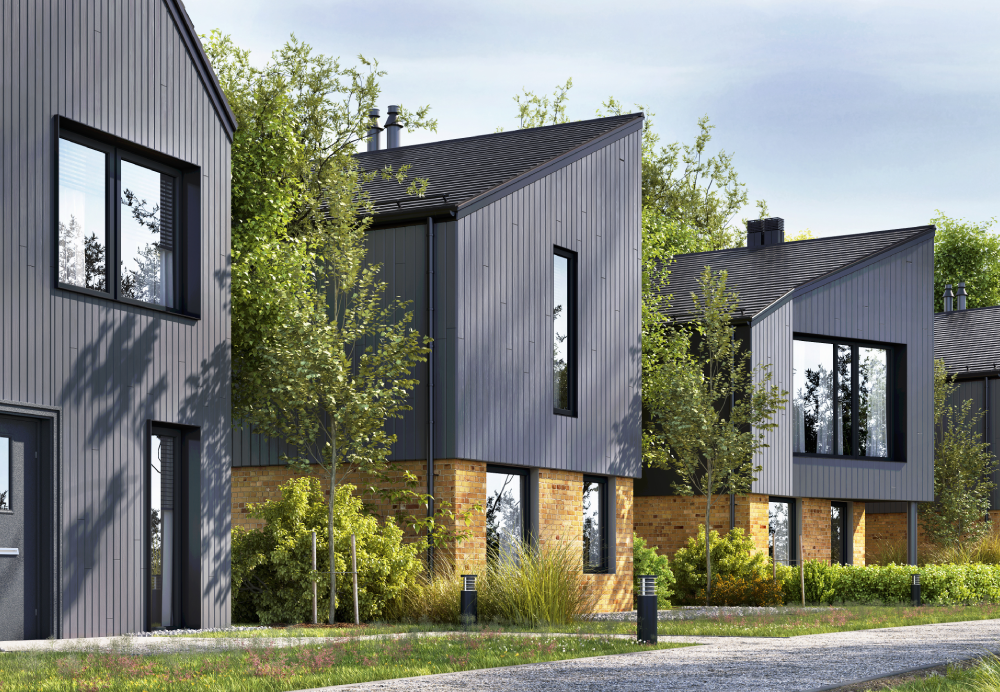
Modular Passive Houses: An In-Depth Insight into Modern Living
As the world moves towards sustainable and environmentally friendly solutions, the concept of modular passive houses is gaining significant attention. These innovative housing solutions not only emphasize energy efficiency but also offer an economical and eco-friendly alternative to traditional construction methods.
For those unfamiliar with the term, modular passive houses combine the virtues of modular construction with the principles of passive design to create homes that are both cost-effective and energy-efficient.

What Are Modular Passive Houses?
The concept of modular passive houses revolves around creating prefabricated building sections in a factory setting, designed to meet the highest energy efficiency standards. These sections are then transported to the site and assembled quickly, minimizing construction waste and time.
A key feature of these homes is their ability to maintain a comfortable indoor climate without the need for active heating and cooling systems, thus substantially reducing energy costs.
Understanding the Basics of Modular Construction
Modular construction involves creating building sections, or modules, in a factory-controlled environment. Each module is precision-engineered to ensure consistency in quality and adherence to building codes. The National Association of Home Builders explains that these modules can range anywhere from sections of a room to entire floors.
With modular homes, construction timelines are significantly reduced, and the impact on the environment is minimized. This makes them an attractive option for those looking to build homes quickly without sacrificing quality or sustainability. For more about the process, visit Green Modular Construction.
Passive House Principles
The principles behind passive house design focus on optimizing energy efficiency. By using super-insulated materials, high-performance windows, and airtight construction, passive houses use minimal energy for heating and cooling. They often incorporate ventilation systems with heat recovery to maintain fresh air flow without losing warmth, which is typical in cold climates.
Benefits of Modular Passive Houses
Adopting modular passive houses offers numerous advantages:
- Energy efficiency: Significant reductions in energy use due to advanced insulation and design.
- Cost savings: Lower utility bills and maintenance costs over the life of the home.
- Sustainability: Less construction waste and shorter build times reduce environmental impact.
- Quality control: Factory settings ensure greater precision and adherence to standards.
For additional insights on how modular homes contribute to sustainability, explore Low-Carbon Housing Solutions.
How to Transition to a Passive Modular Home
Transitioning to a modular passive house involves considering the design, materials, and location. Consulting with experts who specialize in passive design and modular construction can streamline this process. Resources like Modular Home Design offer valuable guidance and examples of successful transitions.
Choosing the Right Design
Selecting the right design is crucial for maximizing energy efficiency and comfort. Consider factors such as the local climate, orientation of the home, and the use of sustainable materials. Design flexibility is another advantage of modular construction, allowing you to customize the home to your needs.
Selecting Sustainable Materials
A greener house starts with sustainable materials. This includes the use of eco-friendly insulation, recyclable materials, and efficient building systems. The aim is to minimize the carbon footprint while ensuring the building is robust and long-lasting.
Site Selection and Preparation
The location of a modular passive house influences its performance. Well-situated homes take advantage of passive solar gains, natural shading, and cross ventilation. Proper site preparation reduces the need for extensive excavation and can make the property more energy efficient.
Challenges and Considerations
Like any construction method, there are challenges to consider:
- Initial costs: Although the long-term savings are significant, the upfront costs may be higher than traditional builds.
- Market awareness: Educating potential homeowners on the benefits of modular passive design is essential for widespread adoption.
The Future of Housing
As we look towards the future, it’s clear that modular passive houses represent a significant shift in housing trends. The combination of fast assembly, reduced environmental impact, and long-term cost savings positions these homes as a viable solution to the housing crisis. The report from Make UK discusses how modular housing solutions are addressing these widespread challenges.

Frequently Asked Questions
Are modular homes more efficient than traditional homes?
Yes, modular passive homes are generally more energy-efficient due to their precision-engineered modules and adherence to passive design principles, which optimize energy use.
What is the lifespan of a modular home?
With proper maintenance, a modular home can have a lifespan comparable to traditionally built homes, offering decades of comfortable living.
Can I customize my modular passive house?
Absolutely. Modular construction offers flexibility in design, allowing for customization to suit your specific needs and preferences.
In conclusion, modular passive houses offer a promising path toward sustainable and affordable housing. As awareness grows, these innovative homes are likely to become a common sight in communities around the world, paving the way for a more sustainable future.
This article contains affiliate links. We may earn a commission at no extra cost to you.